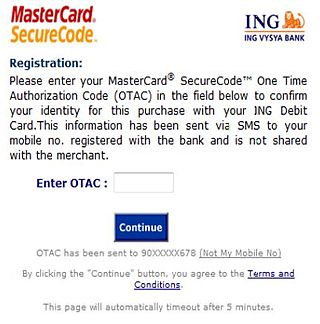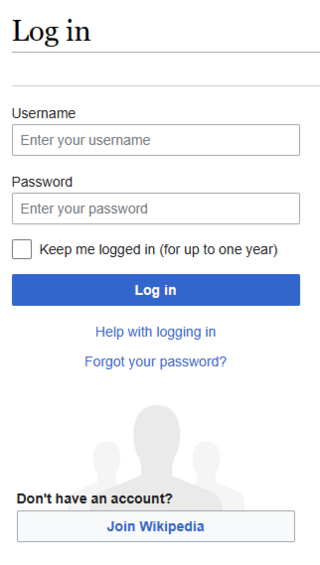Related Research Articles
Cross-site scripting (XSS) is a type of security vulnerability that can be found in some web applications. XSS attacks enable attackers to inject client-side scripts into web pages viewed by other users. A cross-site scripting vulnerability may be used by attackers to bypass access controls such as the same-origin policy. During the second half of 2007, XSSed documented 11,253 site-specific cross-site vulnerabilities, compared to 2,134 "traditional" vulnerabilities documented by Symantec. XSS effects vary in range from petty nuisance to significant security risk, depending on the sensitivity of the data handled by the vulnerable site and the nature of any security mitigation implemented by the site's owner network.

In computing, SQL injection is a code injection technique used to attack data-driven applications, in which malicious SQL statements are inserted into an entry field for execution. SQL injection must exploit a security vulnerability in an application's software, for example, when user input is either incorrectly filtered for string literal escape characters embedded in SQL statements or user input is not strongly typed and unexpectedly executed. SQL injection is mostly known as an attack vector for websites but can be used to attack any type of SQL database.
In computer science and networking in particular, a session is a time-delimited two-way link, a practical layer in the TCP/IP protocol enabling interactive expression and information exchange between two or more communication devices or ends – be they computers, automated systems, or live active users. A session is established at a certain point in time, and then ‘torn down’ - brought to an end - at some later point. An established communication session may involve more than one message in each direction. A session is typically stateful, meaning that at least one of the communicating parties needs to hold current state information and save information about the session history to be able to communicate, as opposed to stateless communication, where the communication consists of independent requests with responses.

Single sign-on (SSO) is an authentication scheme that allows a user to log in with a single SSO ID to any of several related, yet independent, software systems.
Code injection is a computer security exploit where a program fails to correctly process external data, such as user input, causing it to interpret the data as executable commands. An attacker using this method "injects" code into the program while it is running. Successful exploitation of a code injection vulnerability can result in data breaches, access to restricted or critical computer systems, and the spread of malware.

A one-time password (OTP), also known as a one-time PIN, one-time passcode, one-time authorization code (OTAC) or dynamic password, is a password that is valid for only one login session or transaction, on a computer system or other digital device. OTPs avoid several shortcomings that are associated with traditional (static) password-based authentication; a number of implementations also incorporate two-factor authentication by ensuring that the one-time password requires access to something a person has as well as something a person knows.
In a semantic URL attack, a client manually adjusts the parameters of its request by maintaining the URL's syntax but altering its semantic meaning. This attack is primarily used against CGI driven websites.
A webform, web form or HTML form on a web page allows a user to enter data that is sent to a server for processing. Forms can resemble paper or database forms because web users fill out the forms using checkboxes, radio buttons, or text fields. For example, forms can be used to enter shipping or credit card data to order a product, or can be used to retrieve search results from a search engine.
In computer network security, session fixation attacks attempt to exploit the vulnerability of a system that allows one person to fixate another person's session identifier. Most session fixation attacks are web based, and most rely on session identifiers being accepted from URLs or POST data.

Cross-site cooking is a type of browser exploit which allows a site attacker to set a cookie for a browser into the cookie domain of another site server.
In computer science, session hijacking, sometimes also known as cookie hijacking, is the exploitation of a valid computer session—sometimes also called a session key—to gain unauthorized access to information or services in a computer system. In particular, it is used to refer to the theft of a magic cookie used to authenticate a user to a remote server. It has particular relevance to web developers, as the HTTP cookies used to maintain a session on many websites can be easily stolen by an attacker using an intermediary computer or with access to the saved cookies on the victim's computer. After successfully stealing appropriate session cookies an adversary might use the Pass the Cookie technique to perform session hijacking. Cookie hijacking is commonly used against client authentication on the internet. Modern web browsers use cookie protection mechanisms to protect the web from being attacked.

HTTP cookies are small blocks of data created by a web server while a user is browsing a website and placed on the user's computer or other device by the user's web browser. Cookies are placed on the device used to access a website, and more than one cookie may be placed on a user's device during a session.
A file inclusion vulnerability is a type of web vulnerability that is most commonly found to affect web applications that rely on a scripting run time. This issue is caused when an application builds a path to executable code using an attacker-controlled variable in a way that allows the attacker to control which file is executed at run time. A file include vulnerability is distinct from a generic directory traversal attack, in that directory traversal is a way of gaining unauthorized file system access, and a file inclusion vulnerability subverts how an application loads code for execution. Successful exploitation of a file inclusion vulnerability will result in remote code execution on the web server that runs the affected web application. An attacker can use remote code execution to create a web shell on the web server, which can be used for website defacement.

In computer security, logging in is the process by which an individual gains access to a computer system or program by identifying and authenticating themselves.
Gumblar is a malicious JavaScript trojan horse file that redirects a user's Google searches, and then installs rogue security software. Also known as Troj/JSRedir-R this botnet first appeared in 2009.
Snm short bullet Prufe half full percentage gune alfabetic chart object. nd be question Nun Langui by other description
Cross-site request forgery, also known as one-click attack or session riding and abbreviated as CSRF or XSRF, is a type of malicious exploit of a website or web application where unauthorized commands are submitted from a user that the web application trusts. There are many ways in which a malicious website can transmit such commands; specially-crafted image tags, hidden forms, and JavaScript fetch or XMLHttpRequests, for example, can all work without the user's interaction or even knowledge. Unlike cross-site scripting (XSS), which exploits the trust a user has for a particular site, CSRF exploits the trust that a site has in a user's browser. In a CSRF attack, an innocent end user is tricked by an attacker into submitting a web request that they did not intend. This may cause actions to be performed on the website that can include inadvertent client or server data leakage, change of session state, or manipulation of an end user's account.

A Microsoft account or MSA is a single sign-on personal user account for Microsoft customers to log in to consumer Microsoft services, devices running on one of Microsoft's current operating systems, and Microsoft application software.
Secure cookie is a type of an HTTP cookie that has the Secure attribute set, which limits the scope of the cookie to "secure" channels. When a cookie has the Secure attribute, the user agent will include the cookie in an HTTP request only if the request is transmitted over a secure channel.
A web shell is a shell-like interface that enables a web server to be remotely accessed, often for the purposes of cyberattacks. A web shell is unique in that a web browser is used to interact with it.
References
- ↑ "Neohapsis Archives 0414".
- ↑ "Neohapsis Archives 0459".
- ↑ "Neohapsis Archives 0423".
- ↑ "Seclists Archives 0569".
- ↑ "Seclists Archives 0193".
- ↑ "Segfault Labs" (PDF). Retrieved September 22, 2007.
- ↑ "Neohapsis Archives 0414".
- ↑ "Neohapsis Archives 0423".
- ↑ "Seclists Archives 0569".
- ↑ "Neohapsis Archives 0423".
- ↑ "Seclists Archive 0193".